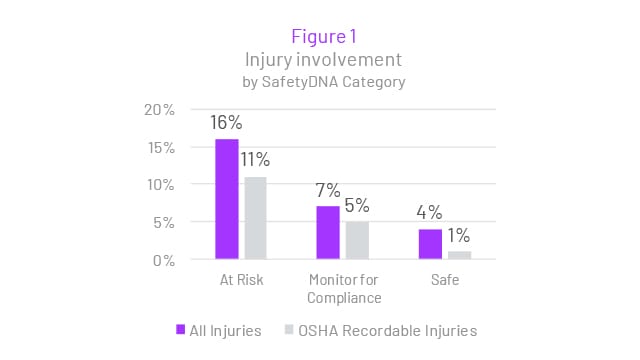Challenge
Not all work-related injuries are the same. A small cut that requires no more than antiseptic and a plaster and a serious cut that causes tendon damage, requires 50 stitches and five days of rest plus another month of restricted work are both injuries. The former, however, is not considered to be an OSHA recordable incident whereas the second one would.
According to data from the U.S. Bureau of Labor Statistics, slightly more than one half of the 3.7 million private industry injury and illness cases reported nationally in 2010 were of a more serious nature that involved days away from work, job transfer, or restriction – commonly referred to as DART casesi. In other words, over 50% of all injuries were severe enough to lead to loss of work, restricted duty upon return and/or transferring out of the original job.
While there are many factors that contribute to safety incidents, it’s clear that some individuals are more likely to engage in high risk, unsafe behaviours than others. For instance, 20% of drivers account for almost 80% of all driving accidentsii. That 80/20 pattern is similar to what is found in other industries for negative behaviours, including safety. As an employer, the key is to have an accurate way to identify those high-risk individuals early in the hiring process before they become employees.







